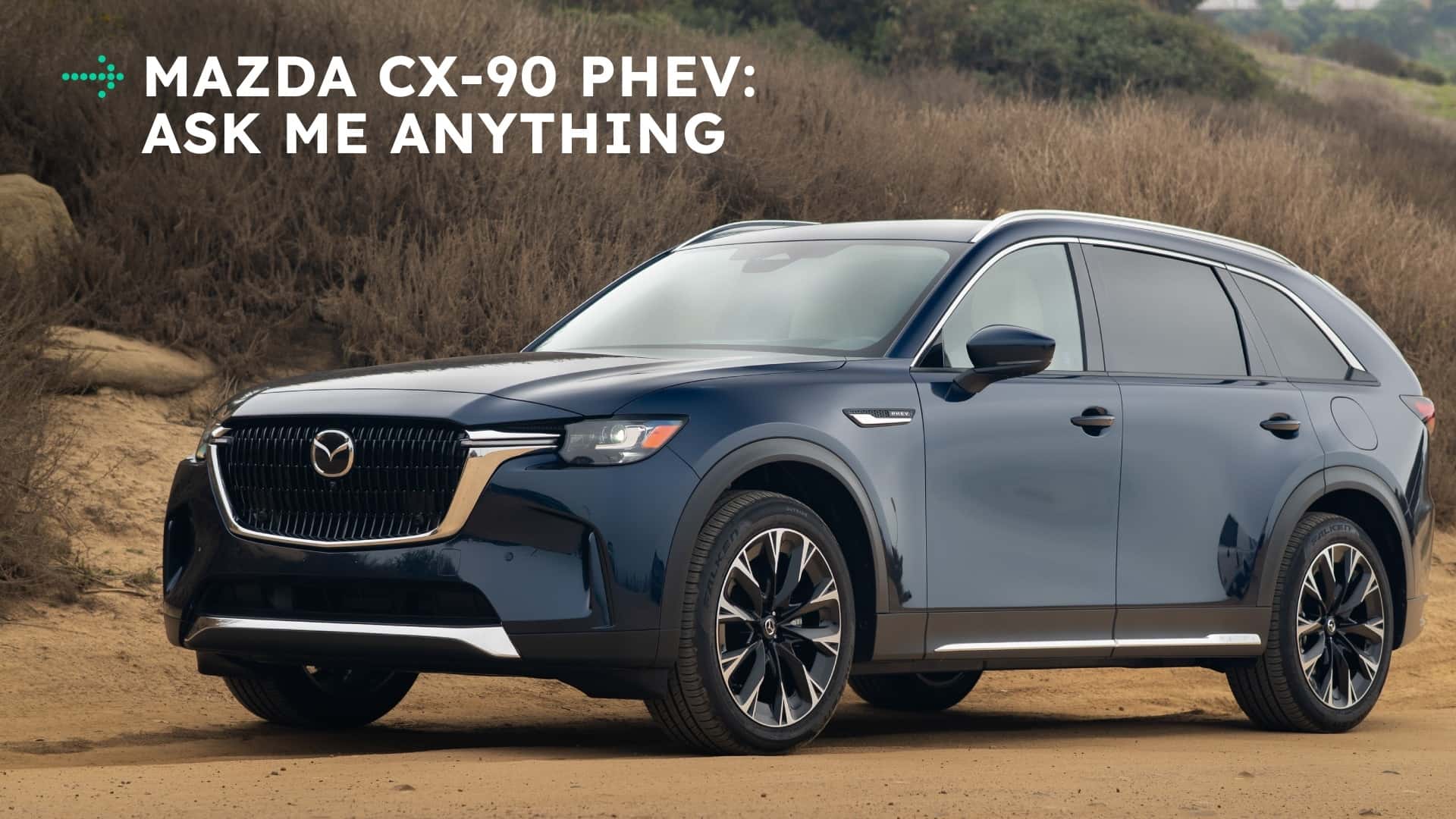With three rows of seats and 26 miles of all-electric range, the CX90 PHEV is Mazda’s most efficient people hauler. But is it any good?
It’s not easy to find a good three-row family EV. The
Rivian R1S,
Tesla Model X
,
Mercedes EQS SUV
and
Cadillac Escalade IQ
are all pretty pricey, and some of their third rows are pretty dinky. The
Volkswagen ID. Buzz
isn’t cheap either, and
it doesn’t have the range for a long-haul family road trip
.
The trims of the
Kia EV9
do, but get pricey as well.
So for shoppers on a budget, the answer may be a plug-in hybrid, like the
Chrysler Pacifica
PHEV,
Mitsubishi Outlander
PHEV,
Volvo XC90
or the car I’m driving this week, the Mazda CX-90 PHEV.
Currently, “more affordable than a three-row electric vehicle” doesn’t imply that it’s inexpensive. The Mazda CX-90 PHEV Premium Plus model parked outside has an MSRP sticker price of $59,405 including the mandatory destination fee, which is roughly $10,000 above the current national average for new cars being purchased in the U.S.
But if you skimp on the options, you can get a CX-90 PHEV Preferred for $51,995, which ain’t half bad for a three-row PHEV in today’s market. It’s still over $12,000 more expensive than the base, $39,300 CX-90 with the inline-six, though. The federal tax credit—which the CX-90 only qualifies for if you lease, rather than buy, it—can trim some of that down, but you’re still paying a premium here.
For the extra change, you get an SUV with a 2.5-liter naturally aspirated four-cylinder engine and a 17.8kWh battery powering a 68 kw (91 horsepower) electric motor. Power flows to all four wheels via an eight-speed automatic transmission. Mazda says the combo is good for 323 hp and 369 lb-ft of torque, with an all-electric range of 26 miles. Yet high torque demands may still require internal combustion assistance before then.
The CX-90 also has a two-row twin,
the CX-70 PHEV,
which I just sampled as well. I already have opinions on that car—which I’ll rope into the CX-90 review—but suffice to say that if you want this powertrain, body and interior, you can get it with your choice of two or three rows. Even if you do opt for the three-row version, though, don’t expect anything too ginormous. While the CX-90 may be Mazda’s biggest car, Mazdas tend to be smaller than their segment mates. And the CX-90’s move to a rear-wheel-drive-based platform hasn’t helped its hauling capacity.
Related Stories
- The 2025 Mitsubishi Outlander PHEV Didn’t Get This Important Update
- Used Buying Guide For Plug-In Hybrid Electric Cars
- The Chrysler Pacifica Hybrid continues to impress.
- 2025 Volvo XC90 PHEV Has Sharper Looks, New Tech
The CX-90 provides 14.9 cubic feet of storage space behind the third row and expands to 74.2 cubic feet when both rear seats are flattened. While this seems spacious, it falls short compared to the generous cargo capacity offered by vehicles such as the Toyota Highlander, Grand Highlander, Honda Pilot, Chevy Traverse, Hyundai Palisade, Kia Telluride, and even the fully electric Kia EV9. However, the CX-90’s cargo volume aligns more closely with compact three-row models like the Hyundai Santa Fe and Kia Sorento, surpassing only the Mitsubishi Outlander PHEV in terms of cargo room.
What additional information would you like to know about this Mazda? I will provide a comprehensive report on its driving performance and fuel efficiency, but do you have any remaining queries?
I am closely monitoring the powertrain tuning and performance since Mazda’s PHEV system seems to be facing initial challenges. According to Consumer Reports, the CX-90 PHEV was ranked among the least dependable new SUVs for 2025, partly because of problems related to both the PHEV battery and the vehicle’s eight-speed gearbox. However, please let me know which other aspects you would like me to examine further. Feel free to share your thoughts in the section provided below.
Contact the author:
Mack.hogan@insideevs.com
.










